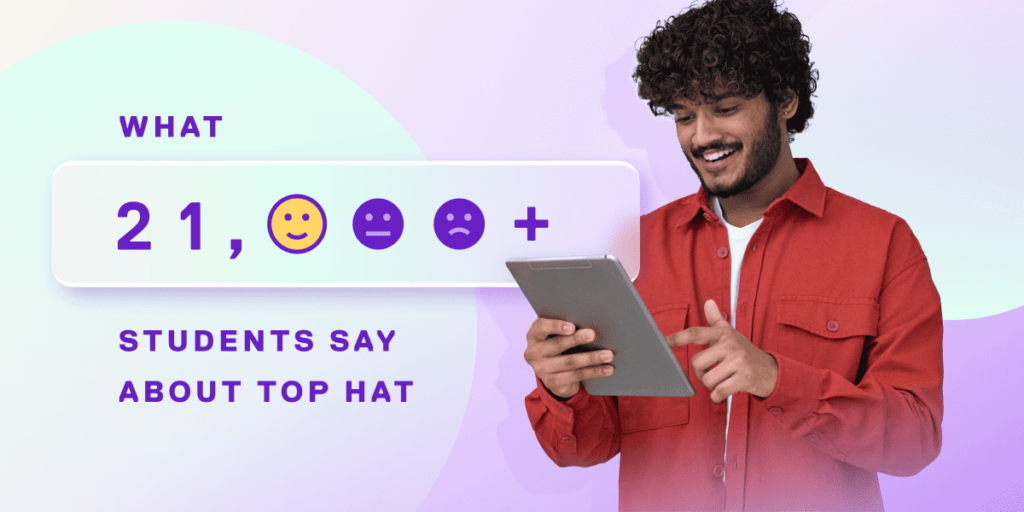The myth that higher education is somehow averse to change is dead. At least it should be. The shift to remote and blended learning over the past few years provides ample evidence that faculty and institutions are more than capable of rising to the occasion. The challenge isn’t so much the ability to change; it is the scale and pace of change necessary today.
Improving retention and graduation rates in the face of declining enrollments has taken on new urgency. The classroom—physical or otherwise—is arguably the most important lever we have to improve the overall student experience and outcomes. This means ensuring evidence-informed teaching becomes the norm, rather than the exception.
We know the basic practices that should be non-negotiable features of every course: tailoring learning to the individual; aiming for significant learning, rather than imparting information that can be easily Googled; forging community within the classroom and connecting learning to the communities students identify with and care about; and, critically, integrating diagnostic, formative and summative assessments in service of student learning rather than infrequent, high-stakes assessments that serve only as an inequitable sorting mechanism.
When it comes to improving student outcomes, we know what works. We live in a golden era of learning science. Yet instructional practice broadly remains rooted in traditional approaches that run contrary to what we know about how people learn. In fairness, what we know is often general and how to effectively apply that knowledge in specific contexts is not straightforward: disciplinary differences, individual student differences, cohort dynamics, and more, call for humility in the application of learning science. So, another dimension of evidence-informed practice is to leverage data to iteratively improve outcomes.
A useful analogy
Higher education is at a similar place to the healthcare system at the turn of the 20th century. At the time, the scientific method was just gaining traction, yet the practice of medicine was still steeped in tradition (bloodletting, anyone?). Today, healthcare professionals are required to demonstrate a clear commitment to evidence-based practice. Negative outcomes are reviewed publicly and mined for insight to improve care. Training incorporates emerging evidence and sets the expectations for professionals to stay current with the latest medical knowledge.
Higher education is not there yet. The question is, how can we make evidence-informed teaching ubiquitous in 10 years instead of 100?
Can you articulate your strategy?
The past few years have meant near constant adaptation. That’s left many at the front-end of change burned out and unclear about where to go next. Vision and mission are well and good, but are less helpful when it comes to clarifying objectives, scope, what needs to be done differently and why. Who are we serving? And who are we not serving? What is our desired outcome? And what priorities will help us achieve it? How will we know we are successful? A clear and differentiating strategy is essential for alignment and decision-making at all levels of the institution.
Lack of strategic clarity makes the business of change more difficult, particularly in the face of faculty burnout. While perhaps only one of many factors, being “all things to all people” only exacerbates the high turnover among faculty and staff already pulled in too many directions. Ambiguity also makes it harder to determine what kinds of evidence we need to collect to guide decision-making and measure progress, as well as the role we want technology to play.
Where do we go from here?
The consensus is institutions have work to do to clarify strategy. Strategy is just as much about guiding incremental change as it is about differentiation. It means making investments and tradeoffs. But doing the hard work will yield important benefits:
- A cohesive strategy provides the narrative structure so important in contextualizing and getting buy-in for change initiatives.
- It helps articulate faculty and staff roles in change, expectations, institutional support and how this will evolve over time.
- It makes clear how technology aligns and supports the larger strategy, helping reduce or eliminate the frictions associated with technology proliferation.
Grounding strategy in improving outcomes, and providing more supportive learning to diverse or historically underrepresented students is a natural starting place. These are tangible and, with the right focus, achievable. They are also things most people and universities care about.
Technology as change accelerant
Technology has opened up new options for higher education—not just in terms of day-to-day operations but within the business of teaching and learning itself. As Diana Oblinger argued almost 20 years ago, “history demonstrates that fundamental technological change ultimately begets significant structural change, regardless of whether the affected participants choose to join or resist the movement.”
We saw this principle in action with the advent of the LMS. The right tools can also accelerate the shift to evidence-informed teaching without requiring faculty to have deep pedagogical expertise or retool an entire course. But to avoid technology for technology’s sake, we need to ensure strategy drives our considerations.
Given the importance of online and hybrid modalities (to say nothing of the expectations for ‘consumer grade’ learning experience among students), digital fluency is foundational. Yet too often we assume students and faculty have the necessary skills. Using a smartphone or PowerPoint is not the same as making optimal use of a student engagement platform or designing a dynamic blended learning environment. Ensuring faculty and students understand the basics is the first step in ensuring equitable and accessible learning. And it’s equally important in instilling the confidence we need among faculty to support ongoing innovation.
The question is determining where accountability for leveling up digital fluency lies. Is this the responsibility of the instructor? Or does this require institutional investment in specialists, whether instructional designers and technologists, to build and maintain a tech enabled environment that aligns to the larger strategy? In any event, laying a solid foundation sometimes means slowing down in order to speed up.
Shifting people and perceptions
The notion of permanence can become a mental roadblock to sustainable change, especially given the speed with which technology is evolving. We need to instill the recognition that what works today will likely change in the future. Like healthcare, change in higher education is an ongoing, iterative process. And that requires a mindshift in and of itself.
It’s all too common for faculty to become discouraged—or even punished—when a new approach or tool doesn’t work out as planned. Incentives and support are important. But so too is removing potential penalties. For example, at some institutions, faculty undertaking material changes to the teaching and learning process are given exemptions from student evaluations. It’s natural to think in terms of rewards, but it may be just as helpful to think about and address the ways in which we disincentivize change.
The language we use to position change is important. By and large, faculty are passionate about research. We enjoy formulating and testing hypotheses, and collecting data. Framing initiatives as ‘experiments’ and opportunities for serious research can be effective in enlarging the pool of people we need to support new initiatives and collect evidence to demonstrate impact.
Conclusion
We’re always hungry for data. But when we are clear on our direction and what the change needs to look like, we should move forward, even if we don’t have as complete a picture as we might like. Many of the tools we use today generate a wealth of data, often in real time. We can harness this to better meet the needs of individual learners and improve course delivery at scale. The key is to make a start. As an early voice for agile software development, Kent Beck, notes, “I tell people to start implementing when they are pretty sure there aren’t more important stories out there. An iteration’s worth of data is worth months of speculation.”


